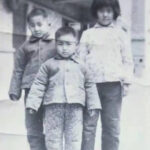Genesis Chapter 5 in the Bible lays the foundation for the creation narrative, introducing Adam and Eve as the first humans and tracing their lineage through ten generations to Noah. Understanding these ancestral connections can be challenging without a clear representation.
This article provides a visual exploration of the Adam And Eve Family Tree, offering an accessible way to comprehend the genealogical relationships of their descendants. By visualizing this family tree, we can gain a clearer understanding of Adam’s lineage and its profound influence on the world as we know it today.
Let’s delve into the details of this foundational family tree.
I. Exploring the Adam and Eve Family Tree
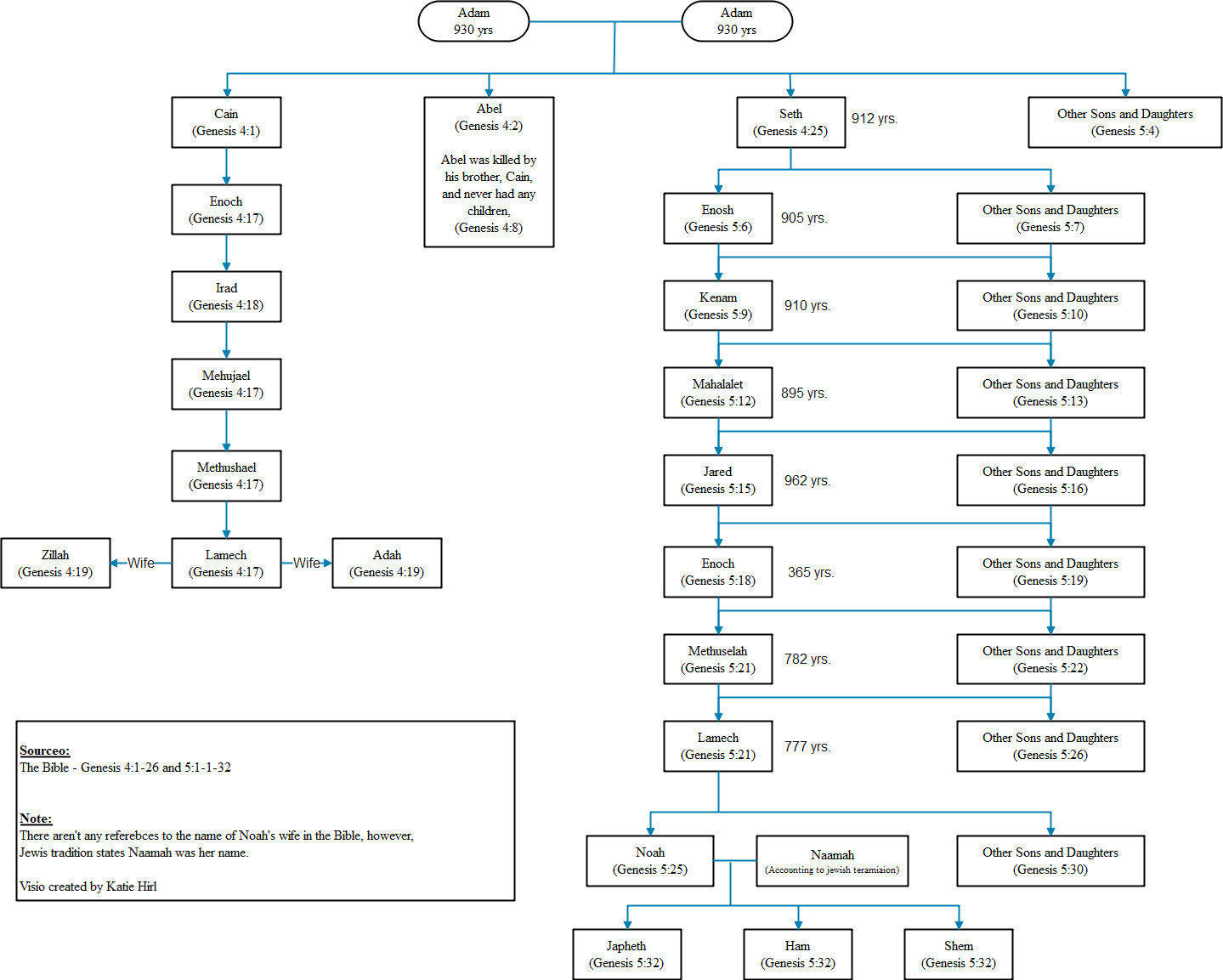 Adam and Eve Family Tree
Adam and Eve Family Tree
Quick Look at Adam and Eve’s Family Lineage
The first generation unequivocally begins with Adam and Eve. The Bible recounts their long lifespans, with Adam living to be 930 years old.
Following them is the second generation: the offspring of Adam and Eve. Among their children, Abel, Cain, and Seth are the most recognized. As illustrated in the family tree, Abel did not have children, as his life was tragically cut short by his brother Cain.
This Adam and Eve family tree culminates in the eleventh generation, marked by Shem, Ham, and Japheth, the sons of Noah.
II. Detailed Insights into Adam and Eve’s Descendants
Having provided an overview of the first family’s genealogy, let’s examine the individual stories and significance of key figures within Adam and Eve’s lineage.
2.1. Adam and Eve: The Genesis of Humanity
Adam and Eve are revered within the Abrahamic faiths as the first man and woman, divinely created by God. The narrative describes God forming Adam from dust in the Garden of Eden. Subsequently, while Adam slept, God fashioned Eve from his rib, establishing the origin of humankind.
However, their time in paradise was short-lived. Seduced by a serpent, they disobeyed God’s commandment by consuming fruit from the Tree of Knowledge of Good and Evil. This act of defiance resulted in their expulsion from the Garden of Eden and their consignment to mortal life on Earth as punishment.
2.2. The Sons of Adam and Eve: Cain, Abel, and Seth
Cain and Abel: A Tale of Two Brothers
Cain, Adam and Eve’s firstborn, derives his name from the Hebrew “Qayin,” signifying “acquired.” Genesis 4:2 identifies Cain as “a tiller of the ground,” indicating his occupation as a farmer.
Abel, the second son, is introduced in Genesis 4:2. His name, originating from the Hebrew “Hebel,” meaning “breath,” is often interpreted as symbolic of his fleeting life. In contrast to Cain, Abel became “a keeper of sheep,” as stated in Genesis 4:2 (NIV).
The brothers presented offerings to God from their respective labors. Abel offered the choicest portions from his flock, while Cain offered fruits of the ground.
God favored Abel’s offering over Cain’s, sparking jealousy and resentment in Cain, as recounted in Genesis 4:5, although the explicit reason for the rejection of Cain’s offering is not detailed.
Despite a divine warning in Genesis 4:6, Cain led Abel to a field and murdered him. As a consequence, God cursed Cain to be “a fugitive and a vagabond on the earth.”
Cain protested the severity of the punishment, fearing for his life. God then set a mark upon Cain, declaring that anyone who killed him would suffer sevenfold vengeance, thus ensuring Cain’s continued exile and isolation.
Seth: The Successor
Seth, the third son, was born to Adam and Eve after Abel’s death. The Bible indicates that Adam and Eve had other sons and daughters as well. Seth’s name comes from the Hebrew “Sheth,” meaning “appointed” or “substituted.” Genesis 4:25 records Eve proclaiming, “God has appointed me another seed instead of Abel, whom Cain slew,” upon Seth’s birth.
Seth married and fathered Enosh. Genesis 5 then traces the lineage of Seth, from Enosh down to Noah, establishing a crucial line of descent.
2.3. Grandchildren of Adam and Eve: Lines of Cain and Seth
Descendants of Seth: Genesis 5 Lineage
Adam fathered Seth at the age of 130 and lived to be 930 years old. The lineage from Seth continues as follows:
- Seth was 105 years old when Enosh was born. Seth lived 807 years after this.
- Enosh fathered Kenan at 90 years old and lived 905 years.
- Kenan fathered Mahalalel at 70 years old and lived 910 years.
- Mahalalel fathered Jared at 65 years old and lived 830 years.
- Jared fathered Enoch at 162 years old and lived 962 years.
- Enoch fathered Methuselah at 65 years old and lived 365 years.
- Methuselah fathered Lamech at 187 years old and lived 969 years.
- Lamech fathered Noah at 182 years old and lived 777 years.
- Noah fathered Shem, Ham, and Japheth at 500 years old.
The Adam and Eve family tree narrative, as detailed in Genesis 5, primarily focuses on Seth’s descendants, culminating in Noah’s sons. According to the biblical account, Noah, his sons, and their wives survived the Great Flood. These three couples are considered the progenitors of all subsequent races and populations on Earth, initiating the repopulation of the world after the deluge.
For further exploration, research into the “Generations of Noah” or “Origines Gentium” can provide additional insights.
Descendants of Cain: Genesis 4:17-26 Lineage
- Cain settled in the land of Nod, meaning “wandering,” east of Eden, and fathered Enoch.
- Enoch fathered Irad.
- Irad fathered Mehujael.
- Mehujael fathered Methushael.
- Methushael fathered Lamech.
- Lamech broke divine decree by taking two wives, Adah and Zillah, becoming the first polygamist mentioned in the Bible. Adah bore Jabal, who became a nomadic herder, dwelling in tents and raising livestock.
III. Creating a Biblical Family Tree: A Modern Approach
In the digital age, visual aids are powerful tools for conveying biblical narratives, especially to younger generations. Visual representations like timelines and family trees enhance understanding and memory of biblical stories and teachings.
Whether you are an educator, clergy member, or parent, incorporating visual tools can significantly improve engagement and comprehension of biblical narratives for students, congregants, and children alike. Visuals often transcend words in their ability to communicate complex information effectively.
Let’s explore how to create a family tree for Adam and Eve, and consider how this approach can be extended to other biblical families such as Abraham and Sarah, or Joseph and Mary.
Building a Biblical Family Tree with EdrawMax
To construct a family tree for biblical figures, user-friendly diagramming software is invaluable. EdrawMax stands out as an excellent tool for creating family trees in just three straightforward steps.
This intuitive family tree maker offers a wide array of downloadable family tree templates. Users, particularly beginners, can easily browse and select a suitable template to quickly get started, bypassing the initial setup process.
For those preferring a custom design, EdrawMax allows for easy drag-and-drop functionality with genogram symbols, enabling users to visually map relationships with precision.
EdrawMax offers a free trial period, allowing users to create several family trees at no cost. This provides an opportunity to evaluate the software before committing to a purchase.
You can download the EdrawMax application to your computer or access the online version for immediate use.
Free Download Free Download Free Download Try Online Free
Try the app & get 500 free AI tokens
Scan Now
Free & Safe
Available on:
Get 500 AI tokens free on the app
Step 1: Template Selection
Navigate to the Template Community within the EdrawMax dashboard and search for “Family Tree.” For more specific results, refine your search, for example, by typing “Adam and Eve family tree.”
You can also search for family trees of other biblical figures, such as “Abraham and Sarah” or “Jesus Christ.”
From the displayed templates, select one that best fits your requirements and click Use Immediately.
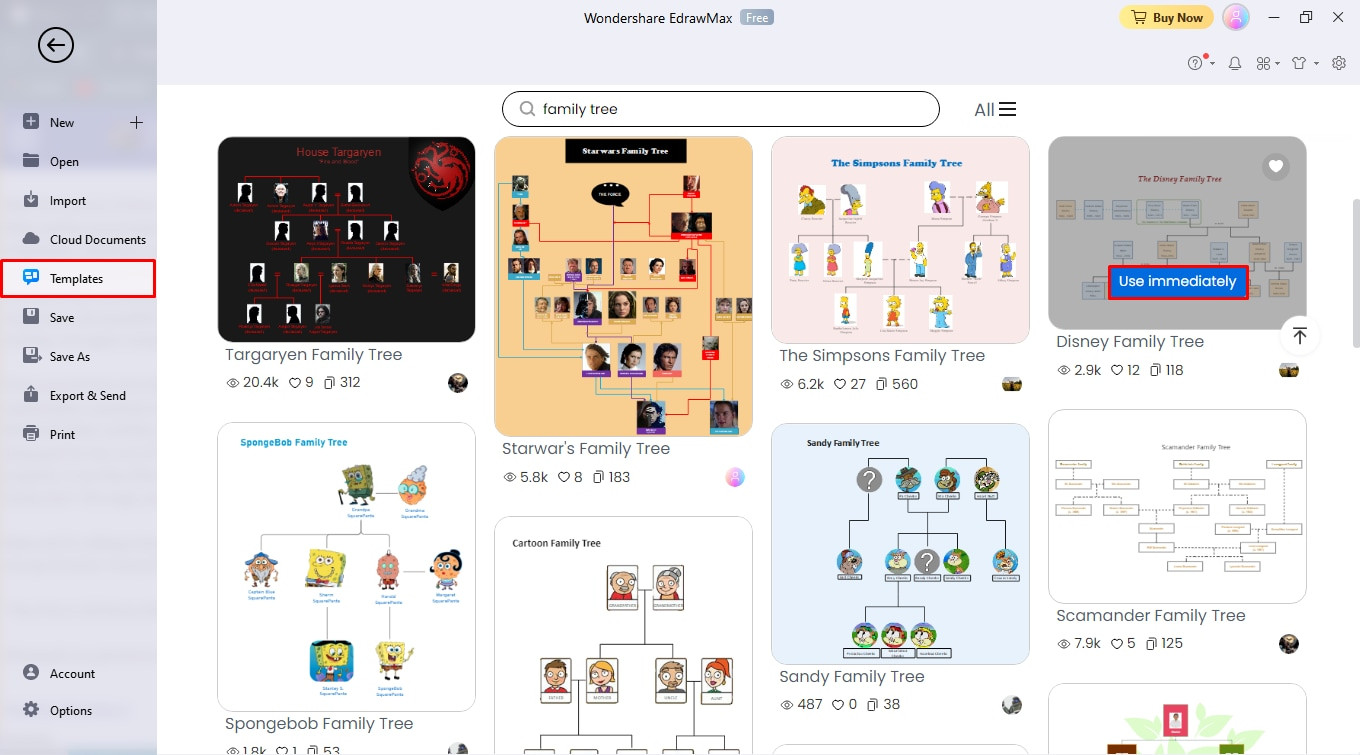 EdrawMax template selection for family tree
EdrawMax template selection for family tree
Step 2: Editing and Input
Once in the editing interface, utilize the left-side symbol library to drag and drop shapes onto the canvas. Connect individuals using the connector points that appear on each shape. After establishing the basic structure, double-click on shapes to add names and details.
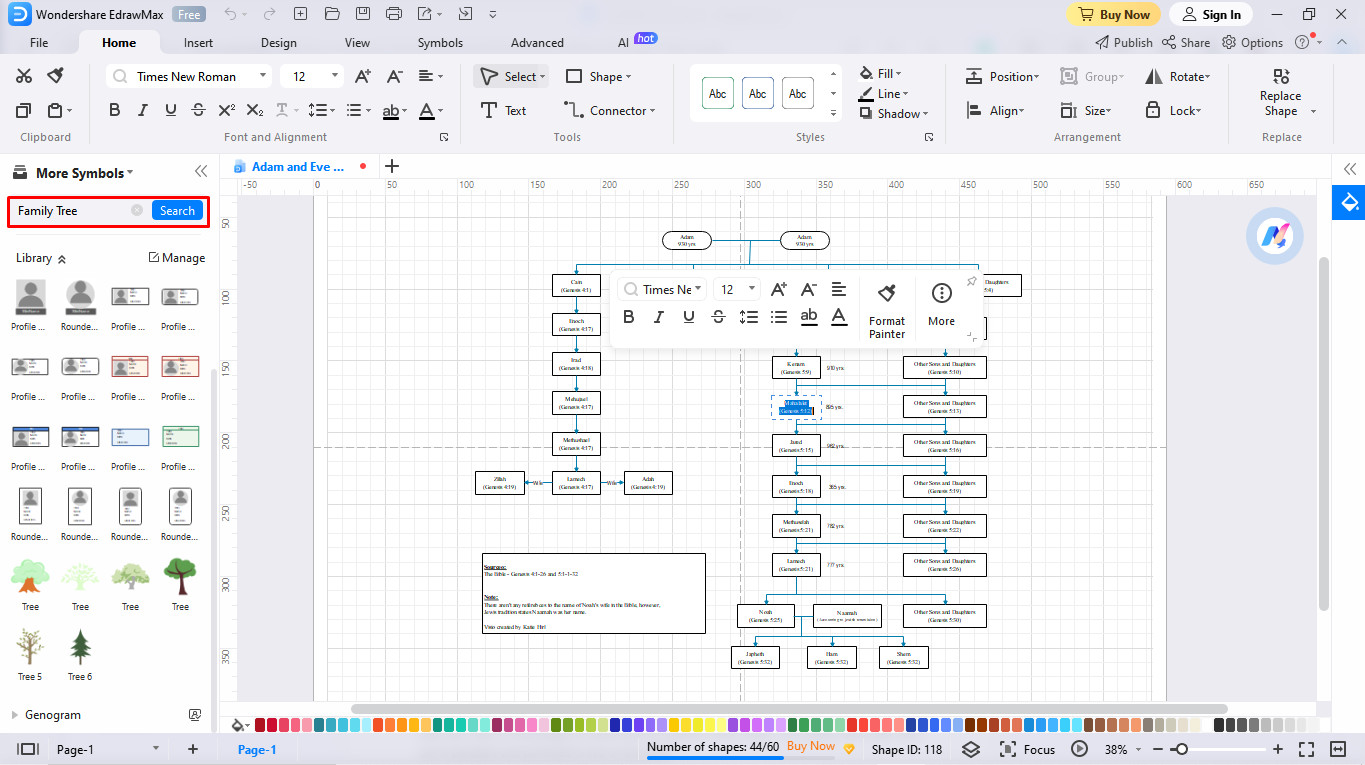 EdrawMax editing panel for family tree creation
EdrawMax editing panel for family tree creation
Step 3: Customization
Enhance the visual appeal of your family tree by using the Design tab on the top toolbar. Here, you can customize fonts, color palettes, and overall themes to match your preferences.
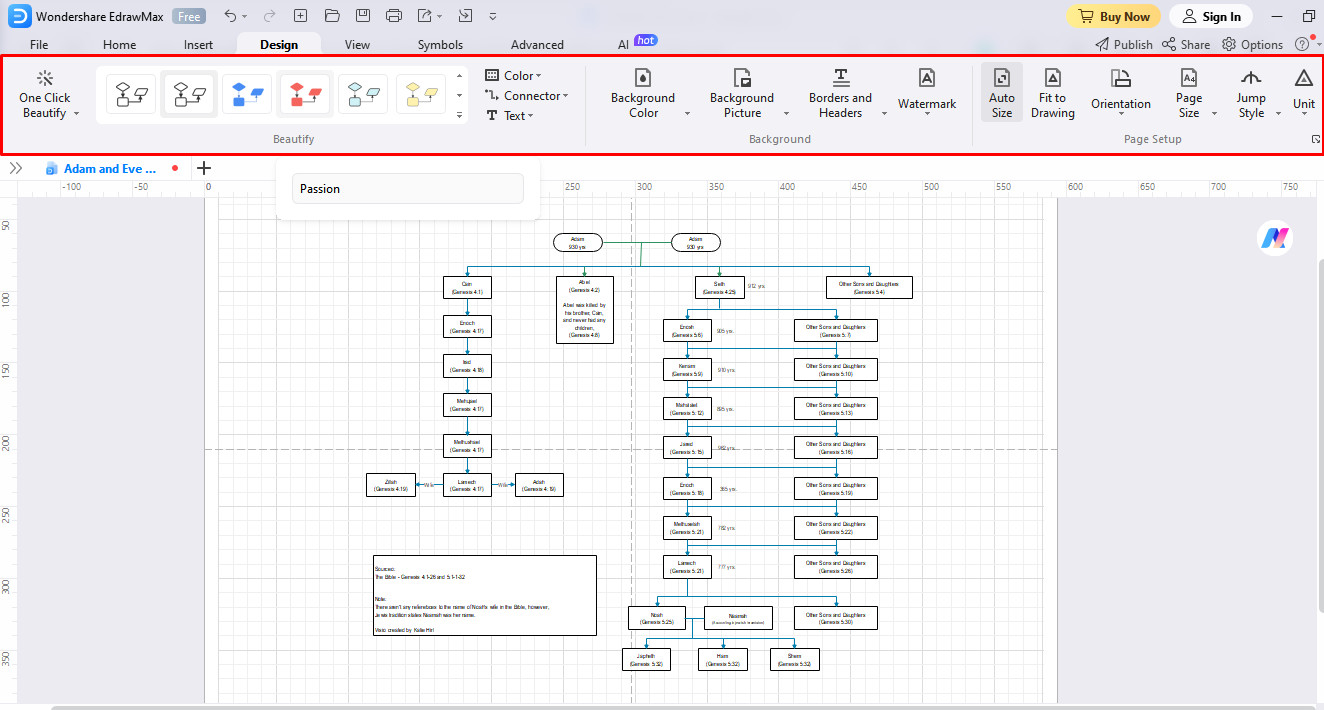 EdrawMax design customization options for family tree
EdrawMax design customization options for family tree
Step 4: Export and Sharing
To save and share your family tree, EdrawMax supports exporting in various formats, including Visio, PPT, PDF, and JPG. Go to File Menu > Export > Preferred Format in the top-left corner to choose your desired output.
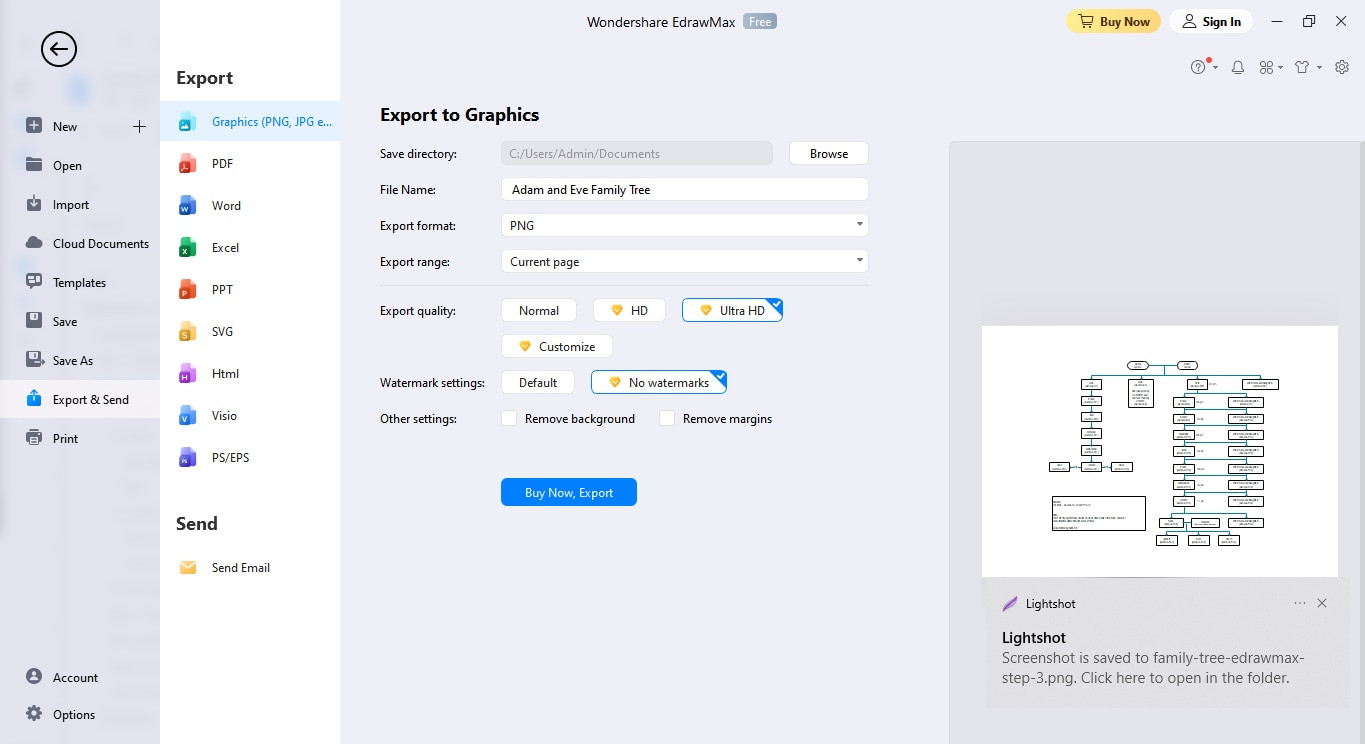 EdrawMax export options for family tree Free Download Try Online Free
EdrawMax export options for family tree Free Download Try Online Free
Free Download Try Online Free
EdrawMax App Store Download Button EdrawMax Google Play Download Button Try Online Free
Conclusion: Understanding Our Genealogical Roots
Adam and Eve serve as a fundamental link connecting humanity to both the Old and New Testaments of the Bible and ultimately to Jesus Christ. Their expulsion from paradise, while a consequence of disobedience, also opened the path for humanity’s journey of redemption. Modern Christian theology connects contemporary believers back through approximately seventy generations to the historical Adam and Eve.
However, grasping the intricacies of these extensive genealogies can be challenging without visual aids. While the Bible may not provide precise dates and timelines for these generations, visualizing the Adam and Eve family tree offers a valuable framework for understanding key biblical doctrines. It provides a clear representation of the relationships and interactions within the initial ten generations of humanity, culminating in Noah and his pivotal role in biblical history.
EdrawMax Desktop
Simple alternative to Visio
210+ types of diagrams
10K+ free templates & 26k+ symbols
10+ AI diagram generators
10+ export formats
Free Download Free Download Free Download
EdrawMax Online
Edit diagrams anywhere, anytime
Personal cloud & Dropbox integration
Enterprise-level data security
Team management and collaboration

